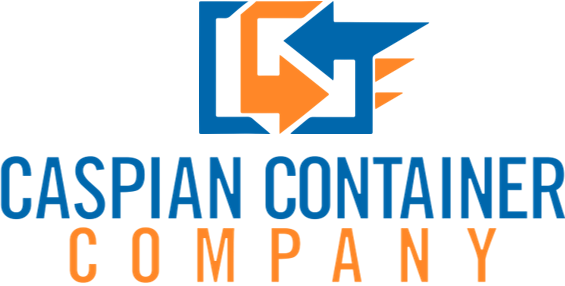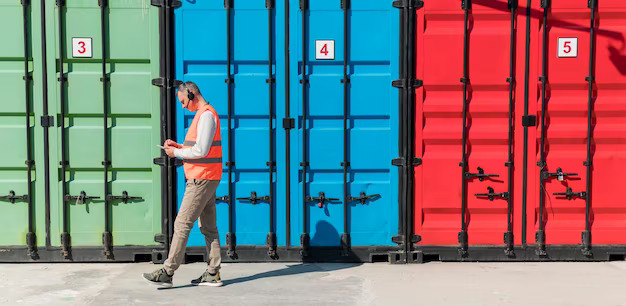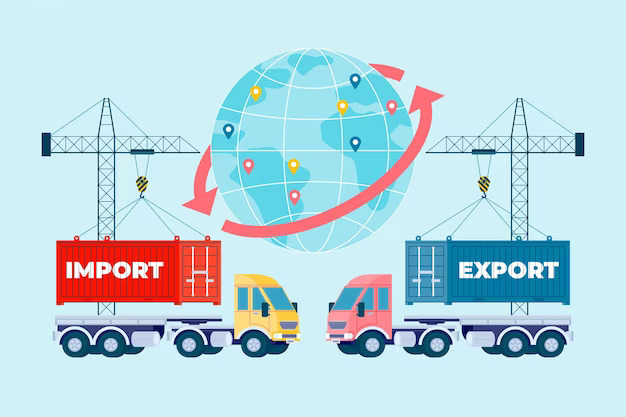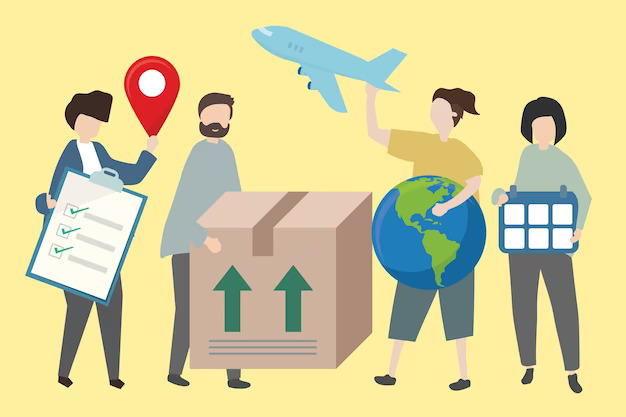When you flip the pages of history, you will probably find that rail transportation is one of the oldest modes of transportation. Even today, despite the setbacks related to a global pandemic, the transport of cargo by rail remains a sizeable industry with a market size of around 247.4 billion USD.
From household goods, and high-end gadgets to food products, automobiles, and building products, you name it, and it was probably shipped by rail at some point. Rail transportation is one of the most preferred modes of freight forwarding for brands across the globe due to its cost-effective nature and reliability. However, if you think otherwise, here are the top 8 advantages of rail transportation services that can convince you otherwise.
1. Cost-effective Transportation
Rail shipping is known for many things, but its cost-effective aspect remains a major aspect for selecting this mode of logistics. Trains can carry large quantities of cargo at once, which makes rail transport an efficient alternative for transporting goods in bulk over long distances. Especially when you have to ship multiple containers at once, the economy of scale in rail transport can lead to massively reduced shipping costs per unit, as compared to other modes of transportation over sea or air
2. Energy efficiency and Environmental sustainability
Do you know the amount of carbon footprints planes and ships generate? In addition, every year, thousands of containers get lost in the sea which leads to marine pollution. However, when it comes to rail shipping, it is more environment-friendly than sea or air transport. Trains are significantly more energy efficient than trucks because they produce fewer greenhouse gas emissions per ton-mile of cargo. When you opt for rail shipping, you also get the opportunity to establish yourself as an eco-aware brand. In addition, railroads also invest in technologies and strategies to improve fuel efficiency and minimize environmental impacts, so you can rest assured that you are doing your part in saving the environment.
3. Reliability and Consistency
Let’s face it: no one wants to shoot apology emails to their clients and customers just because their shipment was late. When it takes days and months in the manufacturing cycle, sometimes a supply chain mishap can cost thousands of dollars for businesses. However, you can avoid these mishaps with a reliable and consistent alternative, such as rail shipping. Trains operate on fixed schedules, and railroads prioritize safety and adherence to timetables. This predictability is especially valuable for businesses that require consistent and on-time delivery of goods, helping them meet customer expectations and reduce supply chain disruptions.
4. Reduced Congestion and Traffic
How often has your cargo been delayed due to traffic congestion on roads, or compliance delays on ports? If your business includes logistics and you work in a time-sensitive industry, rail shipping can be an excellent way to avoid any unnecessary delays. How? The truth is railways aren’t prone to port or traffic congestion, and when you move a significant volume of cargo off highways and onto tracks, rail shipping can reduce the strain on road infrastructure. Choosing railways for your shipping ventures does not just help your business; it also reduces the incidence of accidents and unfortunate delays on highways for people.
5. Long Distance Capability
If you are transporting containers across states, or you have a long-distance consignment waiting to be shipped, rail shipping can be one of the safest options you can seek. Trains can traverse vast distances efficiently and safely. As long as you pack your products in the container safely, your consignment will be safe irrespective of the distance it has to traverse. Throughout the transit, you can rest assured that everything will be in perfect condition without any damage. Especially for businesses with supply chains that span across long distances, railways can be a reliable way of moving products over extended routes.
6. Safety and Security
Imagine shipping fragile or sensitive items over short or long distances and they get damaged along the way. Often supply chains rely on freight forwarders for handling their products, and railways are safer and secure than any freight forwarding alternative you can ever pick. Railroads tend to prioritize safety and security in their operations. They have strict safety protocols, well-maintained infrastructure, and trained personnel to ensure the protection of both cargo and personnel, and this focus on safety makes rail shipping a secure choice for transporting valuable or sensitive goods.
7. Capacity for Bulk and Heavy Cargo
You can always ship multiple containers or heavy cargo through railways without second thoughts. Trains can accommodate large volumes of goods, such as raw materials, agricultural products, minerals, or sometimes even perishable items that would be nearly impossible or impractical to transport by any other means. So, if you want to transport heavy goods in bulk or multiple consignments without any setbacks, damages, or delays, rail shipping can be a great way.
8. Versatility and Intermodal Integration
Rail shipping integrates well with other modes of transportation, providing versatility in supply chain logistics. Many railroads have established intermodal facilities where cargo can be seamlessly transferred between trains, trucks, and ships, and this integration allows businesses to create efficient and cost-effective transportation networks that span multiple modes.
9. Reduced Risk of Accidents and Collisions
Nobody wants damaged cargo during transit when they have their customers relying on the shipment. Damaged cargo doesn’t just mean financial loss; it also means damaged brand reputation. If you want to avoid accidents and collisions, rail transport can be a great option as compared to road, air, or sea transport. Trains operate on dedicated tracks with limited access points, reducing the likelihood of accidents caused by human error or unexpected obstacles on the road, and the enhanced safety factor can be valuable when transporting hazardous or delicate cargo.
10. Minimal Weather-Related Disruptions
Railroads are generally less affected by adverse weather conditions than other modes of transportation, such as trucks or planes. Trains can continue to operate in rain, snow, and other inclement weather, with only minor disruptions, and this resilience to weather-related challenges ensures that goods can be delivered consistently, even in regions prone to extreme weather events.
11. Lower Risk of Theft and Vandalism
If you think your consignment isn’t prone to theft or vandalism, you are mistaken because nobody wants a reason to commit a misdemeanor or felony. Rail shipping often involves secure terminals and yards that are less susceptible to theft and vandalism compared to trucks parked overnight in less controlled environments. This is especially crucial for high-value or sensitive cargo, providing an additional layer of security in the supply chain.
Types of Rail Shipping
- Containerized Freight: Containerized rail shipping involves standardized containers, similar to intermodal shipping. Containers are loaded onto railcars, providing a seamless transition between rail and other modes of transportation like ships and trucks. This method is widely used for international trade and allows for efficient handling and tracking of cargo.
- Bulk Cargo: Railroads are highly efficient at transporting bulk cargo, such as coal, grain, ore, and petroleum products. Specialized railcars carry these materials in large quantities, making rail an economical choice for industries dealing with mass commodities.
- Intermodal Transportation: Intermodal rail shipping combines multiple modes of transportation, including rail, truck, and sometimes ship or air, to move goods efficiently across long distances. It offers flexibility and cost savings while ensuring cargo reaches its destination promptly.
- Unit Train: A unit train consists of a single type of cargo, typically bulk materials like oil, grain, or chemicals, transported in a continuous chain of railcars. These trains are highly efficient and minimize handling, reducing transportation costs.
- Specialized Freight: Some industries require specialized railcars for unique cargo, such as auto carriers for transporting vehicles, refrigerated cars for perishable goods, or flatcars for oversized equipment and machinery.
- Passenger Rail: While primarily designed for carrying passengers, passenger rail systems may also transport limited amounts of cargo, such as mail and express freight. High-speed trains, like the TGV in France, offer quick delivery for time-sensitive goods.
- High-Speed Rail: High-speed rail networks are primarily designed for passenger transportation, but they can also be used for express cargo services, particularly in densely populated regions where speed is critical.
- Regional and Commuter Rail: These rail services cater to daily commuters and regional travel. While they prioritize passengers, they may include designated space for limited freight shipments.
Conclusion
While rail freight transport may not always be the first choice for businesses, it offers a myriad of advantages in the short as well as long run. Whether you are transporting bulk goods across continents or looking for a dependable and eco-friendly shipping option to ship across countries, rail transportation can be an excellent way. Searching for professional freight forwarding companies dealing in logistics through railways or want a quote? Contact the professionals at caspian container company today!






